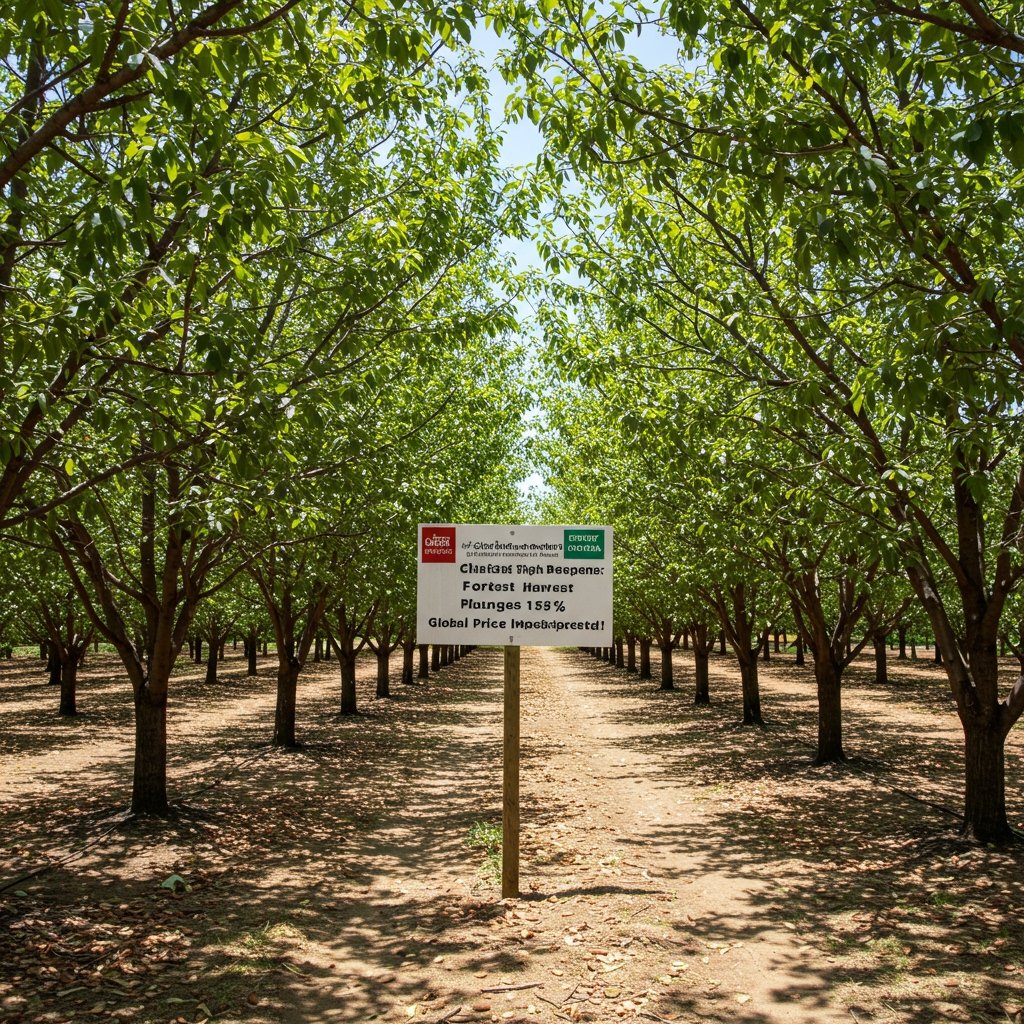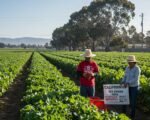Severe Drought Conditions Persist, Threatening California’s Agricultural Mainstay
California’s critical agricultural sector is once again facing significant headwinds as a persistent and severe drought continues to grip key growing regions, particularly the expansive Central Valley. The long-term impact of reduced water availability is becoming increasingly apparent, leading to revised projections for one of the state’s most valuable crops: almonds.
According to a stark report released on March 17th by the California Department of Water Resources (DWR), the state’s water supply situation remains critically low. The report highlighted concerning metrics regarding snowpack levels in the Sierra Nevada mountains, a vital source of California’s water, and reservoir storage volumes. These indicators underscore the severity of the ongoing drought and directly influence the allocation of water to agricultural users.
The implications for farmers, who rely heavily on surface water deliveries and groundwater, are dire. Reduced state and federal water project allocations force growers to make difficult decisions regarding irrigation, crop management, and even the removal of established orchards, especially perennial crops like almonds.
Almond Board Issues Revised Forecast Amidst Water Scarcity
Responding directly to the escalating water crisis and its observable effects on orchards, the Almond Board of California issued a revised forecast for the upcoming harvest on March 18th. The projection paints a concerning picture for the 2025 almond yield, estimating a sharp decline. The forecast now anticipates the yield to be 15% below the five-year average, a significant drop that signals substantial production losses across the state.
This anticipated reduction is not uniform across all growing regions but is expected to be particularly concentrated in areas most acutely affected by water cutbacks. Specifically, regions such as Kern County in the southern Central Valley and Stanislaus County in the northern Central Valley are highlighted as areas likely to experience the most pronounced yield reductions. These counties represent significant portions of California’s total almond acreage, meaning localized impacts have statewide, and potentially global, ramifications.
The forecast methodology used by the Almond Board typically involves surveying growers, assessing bloom conditions, factoring in observed tree health, and, critically, considering water availability and irrigation practices. The 15% projected decline is a direct reflection of the stress placed upon almond trees by insufficient water, leading to smaller nut size, fewer nuts per tree, and potentially increased pest and disease susceptibility in weakened orchards.
Economic Fallout: Price Hikes and Grower Hardship Anticipated
The projected 15% drop in California’s almond yield is expected to send ripples through both domestic and international markets. California is the world’s largest producer of almonds, supplying roughly 80% of the global market. A significant reduction in supply naturally leads to concerns about rising prices, driven by the fundamental economic principle of supply and demand. Consumers and businesses reliant on almonds – from food manufacturers to retailers – are bracing for potentially higher costs.
Furthermore, the impact extends far beyond commodity prices. Growers are facing substantial economic challenges on multiple fronts. Reduced water allocations mean increased costs associated with securing alternative water sources, such as drilling deeper wells or purchasing expensive water from temporary markets, if available. Lower expected harvests directly translate to reduced revenue. For many farming operations, particularly smaller or family-owned businesses, the combination of increased costs and decreased income threatens their economic viability and long-term sustainability.
The situation underscores the inherent vulnerability of California’s agricultural sector to fluctuations in climate and water availability. While growers have invested in water-saving technologies and practices, the scale and severity of the current drought test the limits of even the most efficient operations. The cumulative effect of multiple years of drought further compounds the financial and operational stress on farming communities.
Broader Implications for California Agriculture and Beyond
The challenges facing the almond industry are emblematic of the broader pressures on California agriculture. The state’s diverse agricultural output, which includes a vast array of fruits, vegetables, and nuts, relies heavily on a predictable and adequate water supply. As climate variability leads to more frequent and intense droughts, the need for long-term water management strategies, infrastructure improvements, and adaptive farming practices becomes increasingly urgent.
The situation in the almond sector serves as a critical indicator for other water-intensive crops and highlights the interconnectedness of California’s water resources, agricultural production, and global food supply chains. The decisions made today regarding water management and agricultural support will have lasting impacts on the state’s economy, environment, and its role as a major global food provider.



















